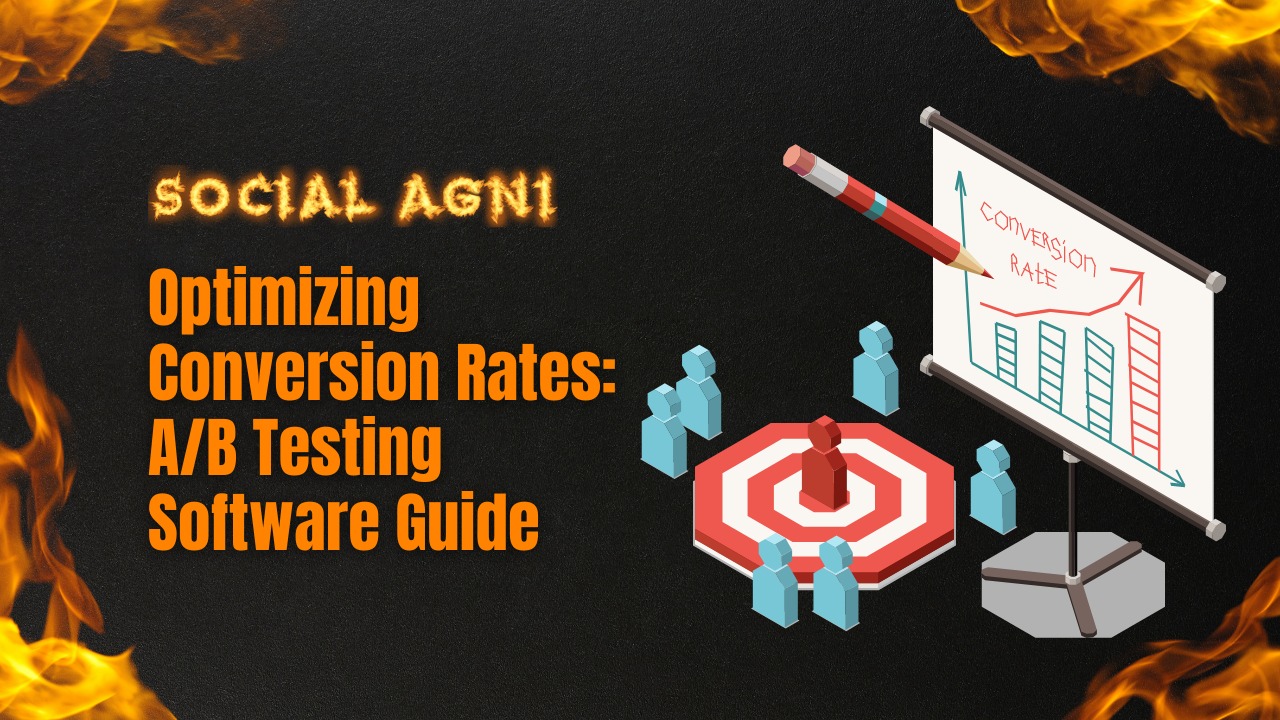Businesses strive to increase their online presence and conversion rates in today’s competitive digital market. A/B testing, a strong tool for comparing two versions of a website or app to see which performs better, is one of the best ways to achieve this aim. Businesses use software for A/B testing. A/B testing software helps firms develop, implement, and analyze A/B tests easily. It simplifies testing to find areas for improvement, maximize conversion rates, and improve website performance. A/B testing software aids data-driven decision-making. Businesses may learn what customers want by running controlled tests and evaluating user behavior and conversion rates. Data-driven decision-making improves user experiences, engagement, and conversion rates. A/B testing software is flexible. Landing pages, call-to-action buttons, navigation menus, content positioning, and design elements can be used. Businesses may maximize conversion rates and achieve their goals by fine-tuning every aspect of their online presence. A/B testing software simplifies testing with several capabilities. These include user-friendly interfaces, drag-and-drop flexibility, comprehensive statistical analysis, real-time reporting, and connection with other marketing tools and platforms. Such capabilities allow firms to easily run A/B testing, track performance, and receive actionable information without technical experience. This thorough overview covers A/B testing tools. We’ll examine its features, the numerous types of software, and how to choose the ideal one for your organization. We will also discuss how to build up experiments, execute tests, assess outcomes, and make data-driven decisions. This post will teach you how to use A/B testing tools to boost conversion rates and business growth. Understanding A/B Testing Software A/B Testing Software A/B testing software, often known as split testing software, lets organizations compare two or more versions of a website, mobile app, or other digital assets in controlled studies. It lets companies evaluate items’ effects on user behavior and conversion rates. The program collects clicks, conversions, and engagement metrics by randomly splitting website or app traffic between versions. A/B testing software’s main features Test Creation A/B testing software lets you design and specify web page or app element variants. Test hypotheses by changing design, content, layout, or call-to-action components. Traffic Allocation The program equally distributes website or app users across the versions being evaluated. Randomization eliminates prejudice and ensures accuracy. Data Collection A/B testing software monitors clicks, conversions, bounce rates, session lengths, and other information. It details variance performance. Statistical Analysis The program analyzes data for significance and reliability. It shows firms whose changes boost conversion rates statistically. Reporting A/B testing software produces detailed experiment reports and visuals. These reports aid firms in data analysis and decision-making. Integration Many A/B testing software integrate with marketing and analytics systems. A/B testing data may be combined with other indicators for a comprehensive view of marketing activities. Types of A/B Testing Software A/B testing software comes in several types. A/B testing software is either cloud-based or self-hosted. Cloud-Based A/B Testing Software Users access cloud-based software via a web browser. It’s simple, scalable, and updated frequently. Cloud-based solutions offer a simple interface, easy test development, and strong reporting. They work for all firms, especially those with little technological resources. Self-Hosted A/B Testing Software Self-hosted A/B testing software is installed and hosted on the company’s servers. For enterprises with security or compliance needs, it offers more control and customization. Installing, maintaining, and customizing self-hosted systems requires technical skills. They’re more flexible yet cost more and require IT maintenance. Businesses should evaluate technological capabilities, money, scalability, and data protection when choosing an A/B testing program. The business’s demands and resources must choose the software type. Choosing the Right A/B Testing Software A. Identifying Your Requirements Before starting the selection process, you must determine your A/B testing needs and goals. Consider these elements Testing Objectives Set A/B testing goals. Do you prioritize conversion rates, user engagement, or website or app optimization? Budget Consider A/B testing software costs. Monthly subscriptions or enterprise-level fees vary by solution. Check your budget for features and support. Technical Expertise Assess your team’s technical knowledge. A/B testing software can be user-friendly or need coding or programming abilities. Select a solution that fits your team. Scalability Consider software scalability. Make sure your A/B testing software can manage large traffic without affecting performance. Integration Make sure the program works with your marketing tools. Integration simplifies testing and allows data exchange between systems. B. Key Considerations in Selecting A/B Testing Software Consider these aspects while choosing A/B testing software for your business User Interface and Ease of Use Choose intuitive software. A drag-and-drop editor, visual editing, and pre-built templates facilitate test creation. Make sure the program is intuitive and easy to use. Integration with Marketing Tools If you utilize analytics platforms, CRM systems, or CMS systems, make sure the A/B testing software interfaces easily with them. Integration enhances data analysis and procedures. Statistical Analysis and Reporting Capabilities A/B testing software should offer comprehensive statistical analysis and reporting. Find confidence intervals, p-values, and statistical significance markers. The program should also provide clear and attractive test reports. Real-time reporting aids testing and decision-making. Pricing and Scalability Compare software pricing to your budget. Check the cost against your expected testing volume and scalability demands. Some software has tiered pricing based on visits or testing. Check the price model for your business size and development objectives. Customer Support and Training Check the software vendor’s customer support and training. Look for software manuals, tutorials, and training materials. In case of troubles or queries during implementation, check customer service channels including email, live chat, and phone assistance. Consider these parameters to find an A/B testing software that meets your company’s needs, technical ability, and budget. Implementing A/B Testing Software A. Setting up A/B Testing Experiments Test Hypothesis and Goals First, state your hypothesis and goals. Choose an element or variant to test and build a hypothesis about its influence on conversion rates or user behavior. Determine Test Variables Choose the web page or app variables you wish to test. Headlines, call-to-action buttons, layouts, graphics, and other elements can impact user behavior. For reliable results,
